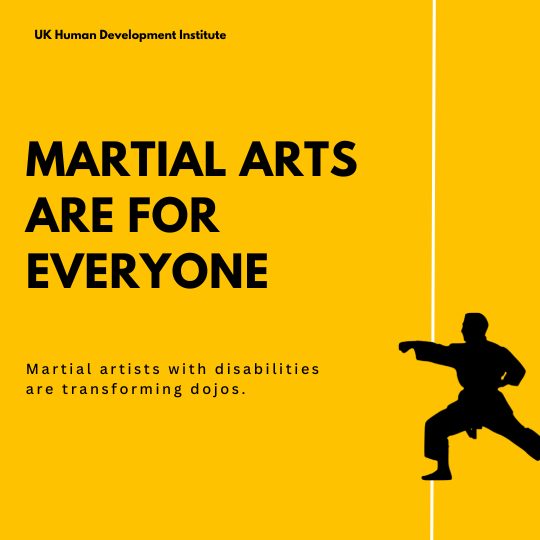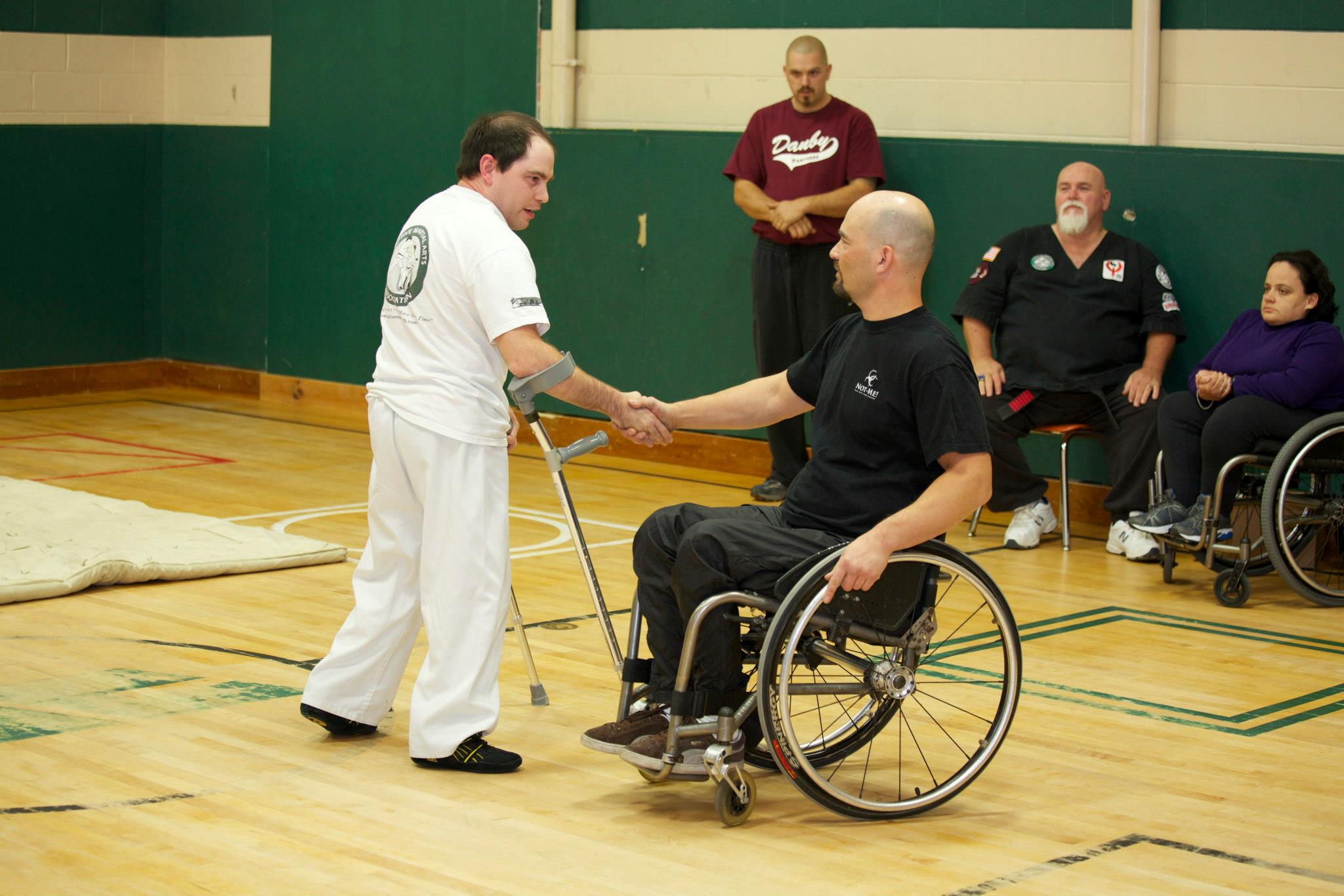Tag: Adaptive Martial Arts
-

The inclusive dojo: HDI training supports martial arts instructors in transforming training spaces
The first thing you do when you enter the dojo is take off your shoes. You’ll see a rainbow of colored belts around the waists of students in matching cotton […]
-

HDI to partner with the Adaptive Martial Arts Association
The Kentucky Inclusive Health Collaborative at the UK Human Development Institute is excited to partner with the Adaptive Martial Arts Association (AMAA) to develop training modules for a web-based certificate […]